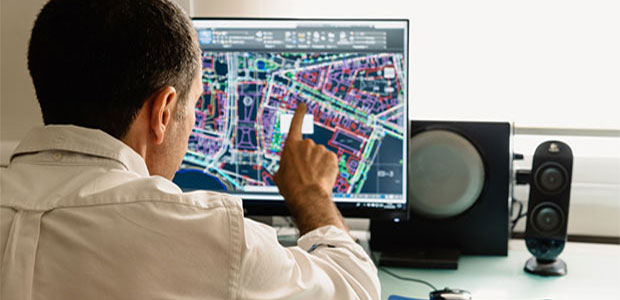
How BIM Technology is Making Job Sites Safer
Building Information Manufacturing (BIM) technology is most commonly used for planning and designing infrastructure, but companies are using it for another area that all construction firms deal with: site safety.
Injury and death on construction sites are very common—and costly. Construction companies constantly have to evaluate the safety of their job sites, and this can be a difficult feat.
In fact, one in every 10 construction workers is injured annually, and construction has nonfatal injury rates that are 71 percent higher than any other industry, according to figures from the National Institutes of Health.
Beyond the actual wellbeing of employees, injuries really make a dent in company budgets, too. The total costs of fatal and nonfatal injuries in the construction industry are an estimated $11 billion—15 percent of the costs for all private industry. The average cost per case for fatal or nonfatal injuries is a whopping $27,000 in construction; this is almost double the per-case cost of $15,000 for all industries.
It is clear the industry struggles to ensure job-site safety—especially since construction sees leading figures in both injury frequency and cost. However, companies like Oakland Construction have found one technology that seems to be a promising solution.
BIM construction technology facilitates building planning, design, and construction. However, its functions are allowing workers to do their jobs with fewer injuries, too. Blake Rawlings, Oakland’s integrated construction team manager, has seen how BIM can be leveraged to mitigate specific hazards and plan safer logistics for an entire project.
For example, Oakland used BIM modeling on a large hospital project to build pre-manufactured, shared rack systems for heating, cooling, plumbing and other equipment that could be assembled on the ground and then hoisted into place at the job site.
The pre-manufacture of those rack systems not only reduced field construction time, but it also increased site safety.
“Everything was built on the ground, so we had fewer people on ladders and things up in the ceiling. That alone increased our safety,” Rawlings said.
But don’t just take Oakland’s word for it: research shows that BIM does improve site safety. Studies show that BIM enables project teams to incorporate safety more effectively into planning. Many are looking to model-based processes to improve safety, and leveraging BIM technology for safety planning and training is a step in the right direction.
Look at the results from the Dodge Data & Analytics SmartMarket Report: Measuring the Impact of BIM on Complex Buildings:
*21 percent of respondents who do more than half their work with BIM said they experienced a high or very high effect on safety.
*37 percent—over a third—of owners and contractors reported more than a 5 percent reduction in reportable incidents.
*12 percent cited more than a 10 percent reduction in reportable incidents.
Another study from Dodge Data & Analytics: Leading the Future of Building: Connecting Design and Construction had similar results:
*27 percent of architects and GC/CMs saw improved overall project safety as a result of using BIM
*24 percent of MEP trades said BIM improved safety during installation
Oakland is not the only company that has been using BIM to keep its construction workers safe. Here are some of the industry’s largest companies using BIM for safety practices, according to a Construction Dive article:
*Turner Construction uses BIM as a tool for automated safety logistics checks and to prevent safety incidents. The company uses the 3-D modeling of BIM to run through all construction and installation details before crews go to the site.
*Skanska has found BIM to be an effective way to eliminate risks to welders. It uses BIM modeling to detail concrete and steel so well that the team can cast the imbeds and the attached beams four levels up without a worker needing to go up an elevator shaft to weld it.
*Lend Lease uses safety models during trade buyouts to model and sequence safety and show how to integrate those models into the workflow
Right now, BIM as a safety tool is relatively new. While many are already using it to identify issues early and plan for potential considerations, BIM-related technology will continue to be developed.